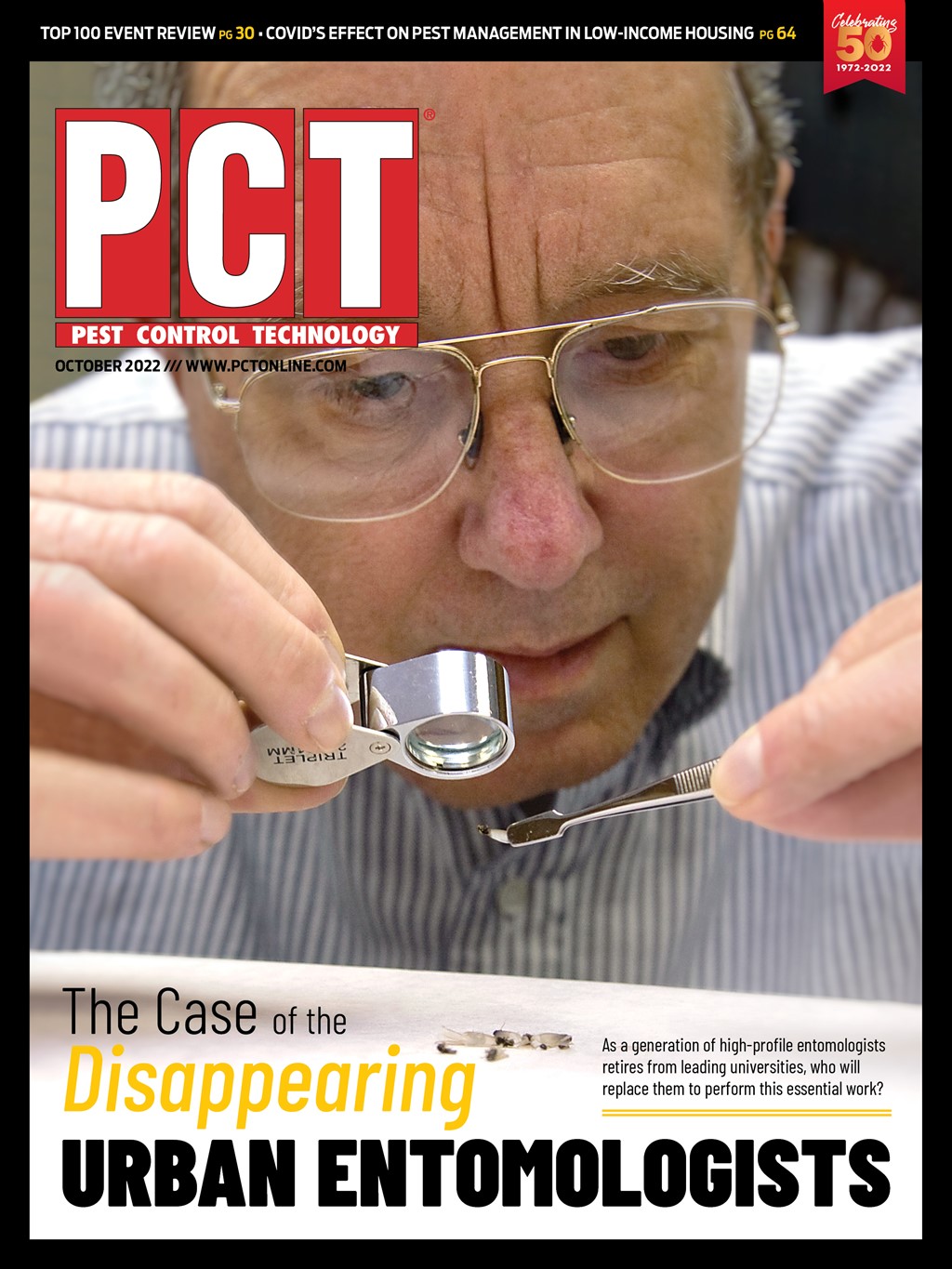After so many years of growth, why has there been a decline in the number of professors dedicated to the field of urban entomology? Dr. Jerome Goddard, a medical entomologist from Mississippi State University with deep ties to the structural pest control industry, has an interesting theory.
“In my view, entomologists, just like in every other scientific discipline, are (becoming) increasingly specialized,” he says. “No one is a ‘general’ urban entomologist anymore.”
In the not-too-distant past, entomologists leading urban entomology programs at universities across the nation were generalists able to speak knowledgeably on a broad range of topics related to structural pests, making them much-coveted speakers at industry trade shows and manufacturer-sponsored educational events.
That’s no longer the case today as the field of entomology, like so many things these days, has become more and more specialized. “Everybody seems to have one or two little narrow subject areas that they know everything about and are unable or unwilling to answer questions or give speeches on the overall subject matter,” Goddard observes.

“For example, a person might be an expert on the microbiome of cockroaches or the expression of a certain suite of genes in bed bugs influencing saliva production,” he says, “but they actually know little about the bigger picture of cockroach or bed bug biology and ecology – where they live, what they do, how they are influenced by environmental factors, etc.”
Goddard says the move towards specialization hasn’t occurred overnight but has been a long time coming. Here is how a “hierarchy of specialization” occurs over time, according to one of the more outspoken members of the industry: “Let’s say in the past, a professor might give a presentation on a certain group of moths,” Goddard says. “Then, a decade later, someone else might give a presentation on the proboscis of that group of moths. Then, a decade later, someone might present a talk at a meeting on the ‘pits’ they found on the tip of that particular moth’s proboscis. And then at present day, someone else might present a talk about the tiny sensory hairs they discovered down inside that pit on the proboscis of that moth.”
While the aforementioned scenario may be a bit of a stretch, it makes a legitimate point. There’s no question “things have gotten increasingly narrow and complex,” according to Goddard, shrinking the pool of generalists who have served the pest control industry so admirably for so many years.
“I have known people who specialized in the genetics of ticks that wouldn’t have a clue where or how to actually go catch some of them in nature,” Goddard says. “Don’t get me wrong; this type of detailed, narrow research is important and may lead to wonderful advances in pest management and control, but we also desperately need more old-fashioned, classically trained, naturalists who know and study whole organisms, not just one or two intricacies pertaining to their internal bodily functions.”

Explore the October 2022 Issue
Check out more from this issue and find you next story to read.
Latest from Pest Control Technology
- Orkin Helps Local Youth Sports Program Design a ‘Killah’ New Logo
- ABC Home & Commercial Services Celebrates 75 Years in Business
- NPMA Academy Announces Full Schedule
- Truly Nolen Promotes Marchello, Christopherson and Bolton to Managerial Positions
- TruGreen Announces 2024 List of Top 20 U.S. Buggiest Cities
- Why PMPs Use Rodent Bait Stations
- NPMA’s Women’s Forum Encouraged Female Leadership, Growth Opportunities in Pest Control
- GoPest Expands to Birmingham and Huntsville (Ala.)





